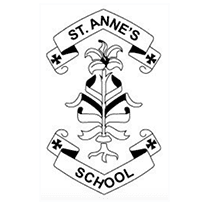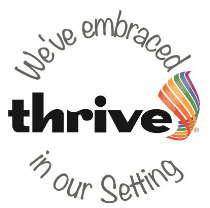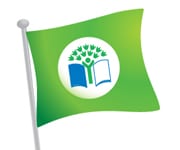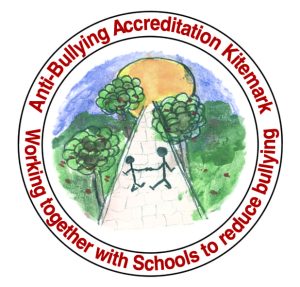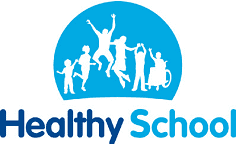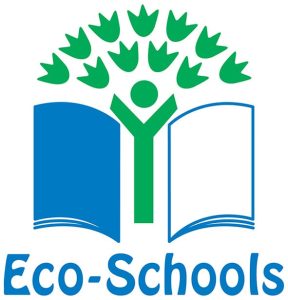Welcome to the Autumn Term in Year 1
This year we will be exploring new ideas, discovering different ways to learn and enjoying a variety of fantastic experiences. I will endeavour to instil a love of learning in each and every child in Year 1 and to inspire your child’s imagination through exciting and interesting topics and themes.
Just like last year in Reception class, I am delighted to still be joined by Mrs Peairs (Tuesday – Friday) and Miss. Banks on a Monday as Year 1 Teaching Assistant. We are very excited to also welcome Mrs. Laidler to our Year 1 team on a Friday afternoon. She will cover my PPA and bring her wonderful music skills to the classroom. Lots of you will be familiar with Mrs. Laidler already who is our school Deputy Head and also SENDCO.
Please find below some information about the autumn term in our class that you may find useful. If you have any questions, please don’t hesitate to get in touch. My email address is e.tonge300@st-annes-pri.durham.sch.uk
This term our PE slots are Tuesday and Friday afternoon. Please come to school wearing your school PE kit on those days.
Homework is set on a Friday and to be returned by the following Thursday.
- Our class mascot will visit a different family each week. This will go home on a Friday and be returned by the following Thursday ready for the next visit.
- Reading – Read Write Inc. – Phonics reading books will be sent home either on a three day or five-day programme. Please make sure your child brings their Phonics Pack to school every day. Each week your child will bring home a Book Bag Book linked directly to the RWInc book they have shared in school. Please share the book, talk through the text. Re-read to improve fluency and share the comprehension ‘Questions to chat about’.
- Reading for Pleasure – each week your child will bring home a picture book to share and enjoy. We will swap these on a Monday. Your child does not need to read this book, simply enjoy story time with an adult.
- More advice on Year 1 reading can be found here: https://home.oxfordowl.co.uk/reading/reading-age-5-6-year-1/
- https://home.oxfordowl.co.uk/reading/reading-schemes-oxford-levels/read-write-inc-phonics-guide/
- A video to help pronounce the sounds http://www.ruthmiskin.com/en/parents/
Here are some things that we will be working on this term…
| English | Spoken Language
Through discussion, role-play and drama the children will explore the story of Cave Baby by Julia Donaldson. Children will have opportunities to perform poetry in particular favourite Nursery Rhymes. Reading Children will look at fiction and non-fiction books and explore the differences between them. Children will read and understand simple sentences. They will read some common irregular words and use their developing phonics knowledge to decode regular words aloud accurately. They will also begin to answer simple questions about texts. Writing – Composition Write sentences by: • Saying out loud what they are going to write about • Composing a sentence orally before writing it • Sequencing sentences to form short narratives • Re-reading what they have written to check that it makes sense • Discuss what they have written with the teacher or other pupils
Phonics: A daily session teaching reading and writing, which is centred around learning the sounds of the letters (phonics) and then blending them together to read words. The children also learn to break down words into individual sounds in order to write them (see attached for more details). |
| Maths | Place Value (within 10) Weeks 1 – 5
· Sort objects · Count objects · Count objects from a larger group · Represent objects · Recognise numbers as words · Count on from any number · 1 more · Count backwards within 10 · 1 less · Compare groups by matching · Fewer, more, same · Less than, greater than, equal to · Compare numbers · Order objects and numbers · The number line · Assessment Number – addition and subtraction within 10 (weeks 6 -) · Introduce parts and wholes · Part – whole model · Write number sentences · Fact families – addition facts · Number bonds within 10 · Systematic number bonds within 10 · Number bonds to 10 · Addition – add together · Addition – add more · Addition problems · Find a part · Subtraction – find a part · Fact families – the eight facts · Subtraction – takeaway /cross out · Take away – how many left · Subtraction on a number line · Add or subtract 1 or 2 · Assessment Shape · Recognise and name 3D shapes and sort 3D shapes · Recognise and name 2D shapes and sort 2D shapes · Assessment |
| Science | Forces and space: Seasonal changes
Reflecting on their own experiences, children learn about the four seasons and the weather associated with each. Pupils explore how seasonal changes affect trees, daylight hours and clothing choices. They plan and carry out their own weather reports, considering the knowledge required for this job. |
| PE | Handball
Football |
| Art | Drawing: Make your mark – Exploring mark making and line; working and experimenting with different materials through observational and collaborative pieces.
Painting and mixed media: Colour splash – Exploring colour mixing through paint play, using a range of tools to paint on different surfaces and creating paintings inspired by Clarice Cliff and Jasper Johns. |
| DT | Mechanisms: Making a moving storybook Explore slider mechanisms and the movement they output to design, make and evaluate a moving storybook from a range of templates. |
| History | Explorers
Who was Christopher Columbus and what was he trying to achieve? Where did Christopher Columbus sail to and what did he find? What was the impact of Christopher Columbus’ voyages? Who was the first man on the moon? How did Neil Armstrong get to the moon? Who was the most successful explorer? |
| Geography | Finding our way around school with directions
How does the Everywhere Bear find their way around school? What is our school environment like? Plan of the school, investigate the grounds, likes and dislikes. How can the Everywhere Bear get around the school? Which way is it for their dinner? To go out and play? How do they get a certificate from her Headteacher? Where do our friends in Year Four work? |
| Music | Musical vocabulary (Under the sea) – Journey into the unknown and explore under the sea through music, movement, chanting and the playing of tuned percussion instruments.
Pulse and rhythm (Theme: All about me) – Children learn to identify the difference between the pulse and rhythm of a song and consolidate their understanding of these concepts through listening and performing activities. |
| RE | R.E. – What can we learn about Christianity from visiting a church?
This unit introduces children to Christianity by giving them the opportunity to visit a local church, reflect on the atmosphere in the church, and learn about how the church is used for Sunday worship. They will find out about the special role of the vicar. Children will also be introduced to special times in the church through the festival of Harvest. Links will be made to Christian beliefs in God as Creator. This unit will build on any previous work on harvest and the church at the Early Years Foundation Stage. Children will have the opportunity to talk about their own experiences and feelings of special places and times and how they may care for the world. |
| PSHE | Y1 Introduction: Setting ground rules for RSE & PSHE
Y1 Family and relationships – Exploring how families can be different, the characteristics and impact of positive friendships; learning that issues can be overcome, people show feelings differently and that stereotyping is unfair |
| Computing | Computing – digital literacy. E-Safety – Children will complete activities based around the Smartie the Penguin Digital Literacy – Children will research Claude Monet and Serat and create pictures using a paint program. Use a simple word processor to type lists and captions. Key Skills: logging on, saving work and printing
|
During Year 1, we will work hard together to create a positive learning environment where children can be the best that they can be and reach their full potential!
Thank you to you as parents and guardians for your ongoing support, we could not do it without you and your incredible children.
Yours Sincerely,
Mrs. Tonge
A Parents’ Guide to Read Write Inc. Phonics.
At St Anne’s CE Primary School, we use the Read Write Inc. (RWI) programme to get children off to a flying start with their literacy.
Read Write Inc. Phonics is a method of teaching reading and writing, which is centred around learning the sounds of the letters (phonics) and then blending them together to read words. The children also learn to break down words into individual sounds in order to write them.
When using RWI to read the children will:
- Learn to read effortlessly so that they can put all their energy into understanding what they read.
- Learn 44 sounds and the corresponding letter/letter groups using simple picture prompts. · Learn to read words using Fred Talk.
- Learn to read words by blending the sounds together.
- Read lively stories featuring words they have learnt to sound out.
- Show that they understand the stories by answering ‘Find It’ and ‘Prove it’ discussion questions.
When using RWI to write the children will:
- Spell effortlessly so that they can put their energy into working out what they want to write.
- Learn to write the letters/letter groups which represent the 44 sounds (graphemes). · Learn to write words by saying the sounds in Fred Talk.
- Learn to write simple and then increasingly complex sentences.
- Compose a range of texts using discussion prompts. · Compose stories based on picture strips.
- Write simple sentences.
Blending
Children learn to read words by blending the letter sounds that are in the Speed Sound sets. Help your child learn to read words by sound-blending e.g. c-a-t = cat. Help children to say the pure sounds, as quickly as they can and then to blend the sounds together to say the whole word. Set 1 sounds Set 2 sounds Set 3 sounds
How will I know how to pronounce the phonic sounds? http://www.ruthmiskin.com/en/parents/
To help the children with their writing, we use the following rhymes to help them to remember the correct letter formation. It would be most helpful, if you wish to support your child at home with their writing, if you also referred to these rhymes.
Thank you very much for your continued support. If you have any questions, please do not hesitate to speak to a member of staff.
Archived information
View our archived Year 1 information on our website.
Adobe Reader
You may need a product like Adobe Reader (free download) to view our PDF documents on our website.
